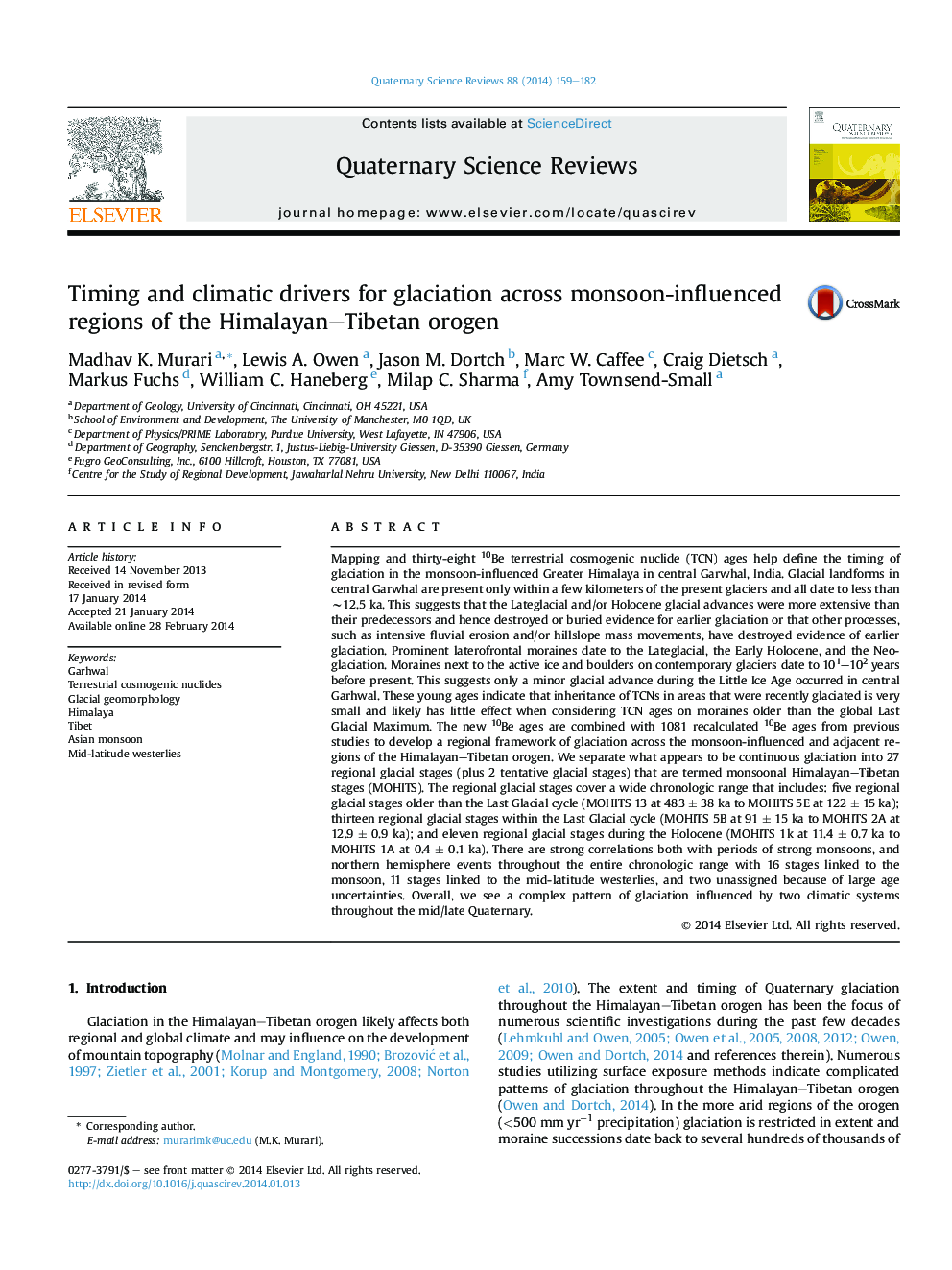| کد مقاله | کد نشریه | سال انتشار | مقاله انگلیسی | نسخه تمام متن |
|---|---|---|---|---|
| 4736618 | 1640846 | 2014 | 24 صفحه PDF | دانلود رایگان |
• Thirty-eight new 10Be ages on landforms in SW Garhwal.
• The most extensive and most distributed advances are not synchronous with the gLGM.
• Twenty-seven regional glaciations are defined for the monsoonal Himalaya and Tibet.
• Sixteen regional glacial stages are linked to the monsoon.
• Eleven regional glacial stages are linked to the mid-latitude westerlies.
Mapping and thirty-eight 10Be terrestrial cosmogenic nuclide (TCN) ages help define the timing of glaciation in the monsoon-influenced Greater Himalaya in central Garwhal, India. Glacial landforms in central Garwhal are present only within a few kilometers of the present glaciers and all date to less than ∼12.5 ka. This suggests that the Lateglacial and/or Holocene glacial advances were more extensive than their predecessors and hence destroyed or buried evidence for earlier glaciation or that other processes, such as intensive fluvial erosion and/or hillslope mass movements, have destroyed evidence of earlier glaciation. Prominent laterofrontal moraines date to the Lateglacial, the Early Holocene, and the Neoglaciation. Moraines next to the active ice and boulders on contemporary glaciers date to 101–102 years before present. This suggests only a minor glacial advance during the Little Ice Age occurred in central Garhwal. These young ages indicate that inheritance of TCNs in areas that were recently glaciated is very small and likely has little effect when considering TCN ages on moraines older than the global Last Glacial Maximum. The new 10Be ages are combined with 1081 recalculated 10Be ages from previous studies to develop a regional framework of glaciation across the monsoon-influenced and adjacent regions of the Himalayan–Tibetan orogen. We separate what appears to be continuous glaciation into 27 regional glacial stages (plus 2 tentative glacial stages) that are termed monsoonal Himalayan–Tibetan stages (MOHITS). The regional glacial stages cover a wide chronologic range that includes: five regional glacial stages older than the Last Glacial cycle (MOHITS 13 at 483 ± 38 ka to MOHITS 5E at 122 ± 15 ka); thirteen regional glacial stages within the Last Glacial cycle (MOHITS 5B at 91 ± 15 ka to MOHITS 2A at 12.9 ± 0.9 ka); and eleven regional glacial stages during the Holocene (MOHITS 1k at 11.4 ± 0.7 ka to MOHITS 1A at 0.4 ± 0.1 ka). There are strong correlations both with periods of strong monsoons, and northern hemisphere events throughout the entire chronologic range with 16 stages linked to the monsoon, 11 stages linked to the mid-latitude westerlies, and two unassigned because of large age uncertainties. Overall, we see a complex pattern of glaciation influenced by two climatic systems throughout the mid/late Quaternary.
Journal: Quaternary Science Reviews - Volume 88, 15 March 2014, Pages 159–182
